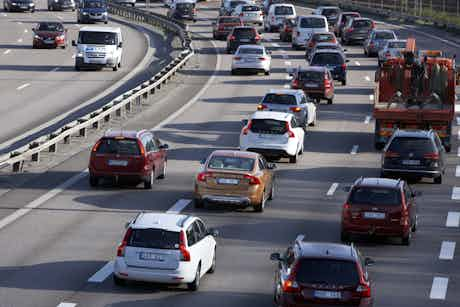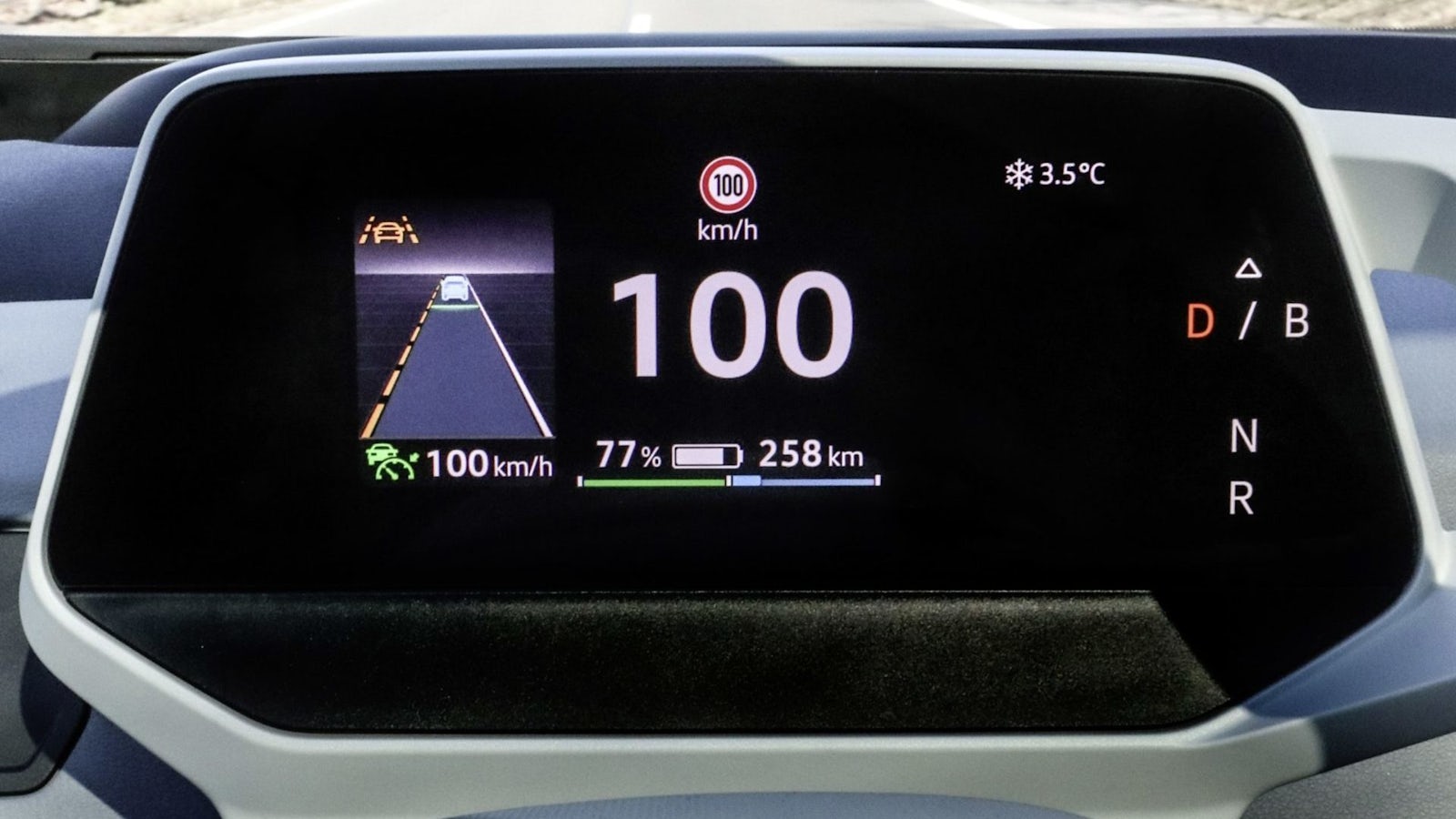What is Lane Assist?
May 26, 2025 by Neil Briscoe

Lane assist is a high-tech safety system designed to stop you drifting out of your lane on motorways and A-roads. Is it effective? And should you use it?
Lane assist is an advanced electronic driver aid that can help to keep you — and others — safe on motorways and main roads by actively keeping your car in its correct lane. How does it work, though? And should you actually use it? We’ll take you through all your lane assist queries below…

What is lane assist?
Lane assist, which can also known be known as Lane Keep Assist (LKA) or Lane Departure Warning (LDW), is an electronic system that uses a combination of cameras, an audible warning alert, and an electric motor mounted to your steering wheel to carefully nudge your car back into its correct lane if it detects that you’re starting to wander across the carriageway without indicating.
How does lane assist work?
Lane assist works by using a camera, or sometimes a pair of cameras, which watch the road ahead. These are usually mounted up high in the windscreen, most often under the big plastic cover that you’ll find behind the rear-view mirror.
These cameras can see where the white (or yellow) lines are on the road in front of your car. Some of the newer systems don’t even need the lines to be painted properly, as they can work out where the lane is based on the general road layout and where the verge or hard shoulder is.
By watching the lines and the road surface, lane assist can tell if your car is starting to move across the boundary of your lane without indicating. Perhaps you’ve actually dozed off, or maybe you’re looking down and changing the radio station — whatever, the lane assist system will detect when you’re starting to drift into another lane, and will sound a warning alert to bring you back to reality. Many will also trigger a vibration in the steering wheel to bring the problem to your attention.

If you don’t react to either of these warnings, most lane assist systems will then use the car’s electric power steering to actually turn the wheel a little, guiding your car back into the correct lane.
The most sophisticated systems will actually scan the road ahead and constantly apply small steering inputs to keep your car neatly in the centre of its lane — known also as lane centring — although you have to keep your hands on the wheel for this system to work.
Benefits of lane assist
- Improved safety. Having a system such as this will stop you wandering into the path of faster traffic coming up from behind, or indeed crossing accidentally over into the wrong lane on a two-lane road, reducing the likelihood of a crash
- Lower driver fatigue. On long journeys, having lane assist on can reassure you that the car won’t just drift across the motorway, allowing you to pay attention to other aspects of driving and reducing your overall driving workload.
- Improved technology. Lane assist is fairly technologically simple, but it’s an important step on the road to fully autonomous cars.
Are there any problems with lane assist?
Any camera-based system can only rely on what it can see, and if the road markings have become worn down, or are obscured by heavy rain or snowfall, then lane assist can simply give up and switch itself off, leaving you without your backup.
As with any electronic driver aid, it should be considered as just that — a backup — and not relied upon to control the car. You’re the one who’s supposed to be in control; lane assist is just your helper, but some drivers currently believe that lane assist is the same thing as fully autonomous robot-style driving, and so pay far less attention to the road than they should.

Lane assist is also usually speed-limited, and generally won’t function at speeds below 30mph. Equally, driving through roadworks — where some road markings are partially covered up and others freshly painted on — can confuse the cameras, and you can end up with your car trying to tug its steering wheel in the wrong direction.
Equally, some cars have very intrusive lane assist setups, where the steering inputs are sharp and almost aggressive, which can be annoying and even tiring. It’s why some drivers simply turn such systems off and take back full manual control.
Cars with lane assist
Lane assist was first developed for trucks, appearing on the Mercedes Actros in 2000. Nissan and Toyota subsequently developed the tech for passenger cars, at first in Japan, while the Citroen C4 was the first European model to get lane assist as an optional extra, in 2005.
Since then, lane assist has become widespread and it has been a mandatory feature, by legislation, on almost all cars sold in the UK since 2022.

Is lane assist worth it?
With lane assist now coming as standard on most cars, it’s a good thing if safety is your most important concern, and it’s an invaluable assistant that helps reduce the chance of an accident happening in the first place.
If you spend the majority of your time driving around town or at speeds below 40mph, then the benefits of lane assist may not be worth it. However, if you spend a lot of time on the motorway then lane assist can make your journey less stressful and safer. All lane assist systems can be deactivated (although they automatically switch back on again when you re-start your car) and many keen drivers prefer to switch them off when on a twisty road, as lane assist is more of an interference than a help in such situations.
Lane assist FAQs
Can I turn off lane assist?
Yes. Every car has a way of turning off lane assist, either via buttons on the steering wheel or dashboard or by accessing the safety settings on the multi-information display.
Some systems offer various levels of intervention if you find the default setting too intrusive or not responsive enough. Most systems will turn on by default once you start the car again.
Can I retrofit lane assist to my car?
Technically, yes. There are aftermarket kits you can retrofit to your vehicle, but they will not be as deeply integrated with the rest of the car’s safety systems as if it were fitted by the manufacturer.Attempting to add lane assist to a base model that may have had it as an option when new isn’t straightforward either, it may require software re-coding and additional wiring. You will either need to be very technically minded to fit it yourself or will need to pay someone to do it for you. Either way, fitting an aftermarket system to your car may end up being more of a hassle than it’s worth.
Does adaptive cruise control include lane assist?
The two systems can be found in cars independently, but most manufacturers will bundle these and other safety systems into packages. For example, Honda has its Sensing Suite, while Subaru calls its bundled package EyeSight.
When specified together, adaptive cruise control and active lane assist can keep your vehicle traveling in the correct lane and at a set speed limit, all while keeping a safe distance to slower vehicles ahead.
Does lane assist work in snow?
Lane assist systems rely on one or more cameras and sensors to detect road markings and layouts. If these become obscured by snow, then they will not be able to function correctly. In these cases, a warning usually appears to alert the driver to the fact that the lane assist system is not available. Clearing the camera lenses (usually located centrally inside the top of the windscreen) of snow or debris should resolve the problem.
Car Change? Carwow!
Looking for a new set of wheels? With Carwow you can sell your car quickly and for a fair price – as well as find great offers on your next one. Whether you’re looking to buy a car brand new, are after something used or you want to explore car leasing options, Carwow is your one stop shop for new car deals.















